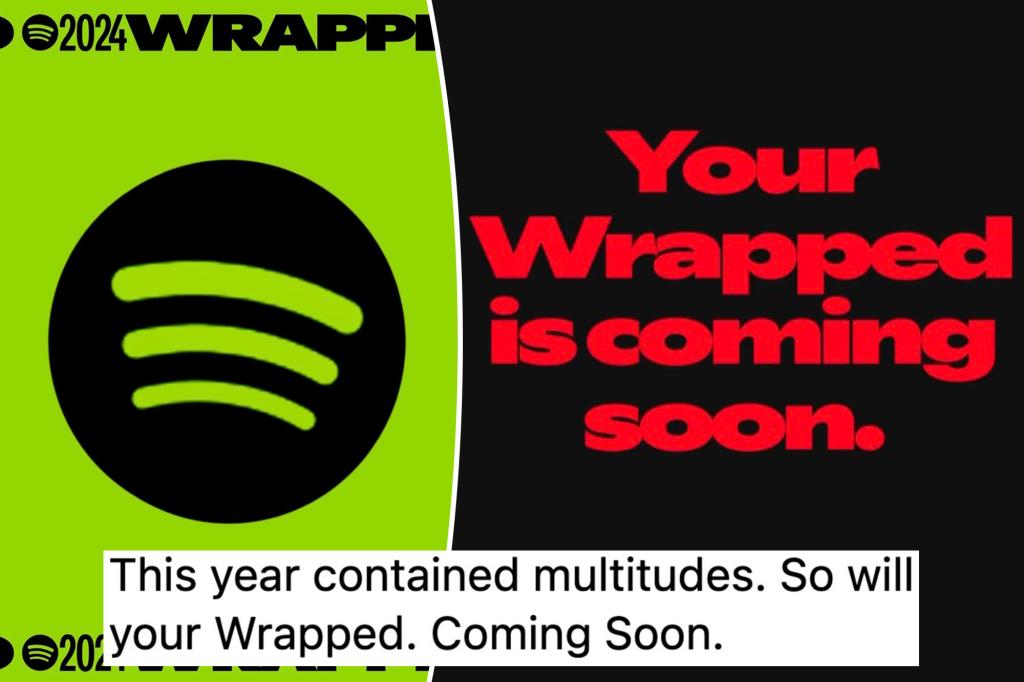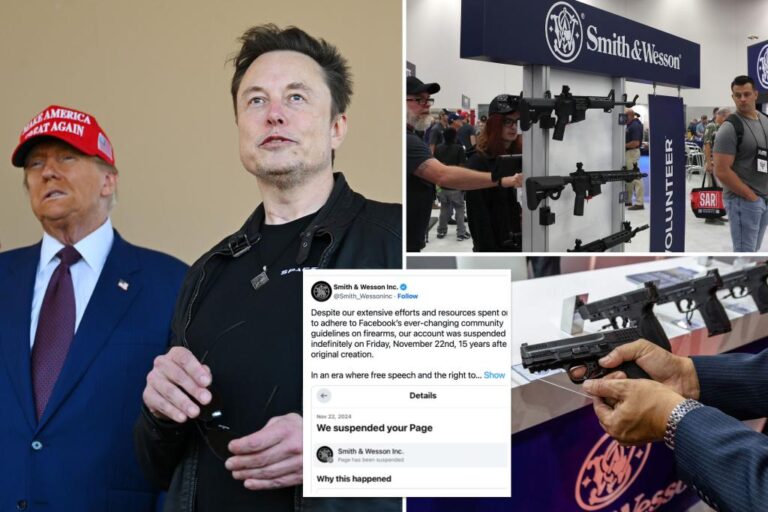Embarrassed Spotify Users Vow to Hack Their ‘Wrapped’ Results – They’d ‘Rather Be in Jail’ Than Reveal the Truth

Every December, Spotify users around the world eagerly await their annual Wrapped results — a personalized report that showcases each listener’s top songs, artists, and genres. It’s supposed to be a fun year-end tradition, a digital reflection of your music taste wrapped in colorful graphics and shareable moments. But this year, some listeners aren’t laughing. Instead, they’re panicking.
Social media has exploded with confessions from embarrassed users who claim they’d rather “go to jail” than reveal their 2025 Spotify Wrapped playlists. Between guilty pleasures, breakup anthems, and questionable binge-listening habits, many are jokingly — or not so jokingly — plotting ways to manipulate or “hack” their Wrapped results before they’re made public.
The Culture of Musical Exposure
Spotify Wrapped has become more than a recap — it’s a cultural phenomenon. With over 574 million active users globally, the campaign dominates social media every December, turning music preferences into viral bragging rights. But as Wrapped’s popularity grows, so does the pressure to appear “cool” or musically sophisticated.
“I realized my top artist was a children’s band I play for my toddler,” one X (formerly Twitter) user wrote. “No one can ever know.” Others confessed that their Wrapped revealed late-night obsessions with 2010s emo, cheesy love songs, or soundtracks from obscure video games.
For many, the embarrassment stems not from bad music, but from what their Wrapped says about their personality. “It’s like a mirror,” joked one TikTok user. “But instead of reflecting my soul, it reflects my emotional damage.”
The Rise of the ‘Wrapped Hackers’
As the memes flood in, a new trend has emerged — listeners trying to “hack” Spotify’s algorithm to rewrite their musical year before the results drop. Some are spending November bingeing on classical playlists or jazz compilations, hoping to drown out the remnants of breakup playlists and overly dramatic ballads.
Others have taken it even further. Reddit threads and X posts detail elaborate plans involving automation tools and bots that repeatedly play “respectable” tracks to skew the algorithm. One viral post titled “Operation Fix My Wrapped” encouraged users to play nothing but Radiohead, Miles Davis, and Taylor Swift’s Folklore for 72 hours straight.
Spotify hasn’t confirmed whether these tactics actually work. The company’s system measures listening patterns over the course of the year — not just the final weeks — but that hasn’t stopped users from trying. “If I can fake my resume, I can fake my Wrapped,” one commenter joked.
When Wrapped Turns Into a Confessional
For many, Spotify Wrapped has become less of a musical reflection and more of an emotional diary. With playlists that capture every mood — from heartbreak to productivity — Wrapped often reveals more than users are ready to admit.
“Mine was basically a timeline of my breakup,” shared a 28-year-old listener from Chicago. “January was Taylor Swift. March was Adele. By August, I was listening to healing podcasts. It’s a therapy report disguised as a playlist.”
Others have found humor in the honesty. Some proudly share their Wrapped results no matter how bizarre — like the user whose top artist was the Barbie movie soundtrack, or the one whose top genre was “ambient whale sounds.”
“Music reflects emotion,” said Dr. Laura Greene, a psychologist specializing in media behavior. “People form emotional connections with songs, so Wrapped can feel deeply personal. Sharing it is like showing your digital diary — not everyone is comfortable with that.”
The Social Pressure of Sharing
What began as a fun annual event has also evolved into a social competition. The instant Spotify Wrapped goes live, timelines fill with curated posts of aesthetic screenshots and captions like “My taste is immaculate.” For some, this creates an unspoken expectation to have a playlist worthy of public admiration.
“I deleted mine before posting,” admitted one user. “No one needs to know that I listened to Nickelback 900 times this year.” Another joked, “Spotify Wrapped is the new SAT score — everyone posts it, and everyone lies.”
This phenomenon underscores how social validation has crept into personal experiences. Wrapped, once a celebration of individuality, now doubles as a social identity marker — proof of one’s personality, creativity, or even intelligence.
How Spotify Benefits From the Chaos
Despite the occasional embarrassment, Spotify Wrapped remains one of the most successful marketing campaigns in digital history. Every share, meme, and confession fuels brand engagement. According to Spotify’s 2024 data, Wrapped led to a 60% spike in app engagement during its release week and millions of organic social media impressions.
“It’s genius,” says marketing analyst Jonathan Reed. “They’ve gamified self-expression. Even when people complain about their Wrapped, they’re still promoting it. Spotify turned embarrassment into advertising.”
Indeed, this year’s online uproar — from jokes about “musical crimes” to mock horror over pop obsessions — only boosts Spotify’s visibility. In the end, even those who claim they’ll hide their Wrapped results will likely peek — and post — anyway.
The Psychology of Musical Identity
Why do people care so much about what their playlists say about them? Experts believe it’s tied to identity and self-image. “Music is deeply personal,” explains Dr. Greene. “It’s part of how people define themselves and connect socially. When Spotify Wrapped presents that data, it feels like a judgment — not just of your taste, but of who you are.”
Studies show that musical preferences often align with personality traits. Extroverts lean toward energetic, rhythmic genres like pop and dance, while introverts prefer reflective or complex music such as classical or indie. Wrapped quantifies this identity in a shareable format — and for some, that quantification feels uncomfortably revealing.
Users Turn Embarrassment Into Humor
Despite the anxiety, the internet has turned self-deprecation into community bonding. Memes of users crying over their Wrapped, fake screenshots of absurd top songs, and exaggerated posts like “My Wrapped looks like a cry for help” dominate social platforms.
Humor serves as both deflection and solidarity. “It’s comforting to know we’re all a little embarrassed,” said one TikTok creator with over 2 million views on her comedic Wrapped reaction video. “It’s like group therapy, but with worse music.”
Spotify’s Response
Spotify has remained characteristically playful about the whole situation. In a recent X post, the company replied to a viral meme: “Don’t worry, your secrets are safe with us (mostly).” The brand has long embraced the chaos of Wrapped season, even creating custom social templates that encourage users to laugh at their habits.
“Spotify Wrapped thrives on authenticity,” said a company spokesperson. “It’s not about perfection — it’s about the soundtrack of your year, whatever that may be.”
Conclusion
For all the embarrassment, panic, and playful denial, Spotify Wrapped remains a beloved annual ritual. It’s part self-reflection, part entertainment, and part collective therapy session. Whether users are streaming “respectable” songs to manipulate their stats or leaning into their guilty pleasures, Wrapped continues to capture the messy beauty of human listening habits.
As one viral tweet perfectly summarized: “My Spotify Wrapped doesn’t define me — it just exposes me.”
And yet, when the results drop, millions will still rush to share them — proof that no matter how embarrassing our playlists get, music remains a universal confession we can’t help but make.






